Instruction
The 3 most important areas of your golf body

This story is part of our new “GolfWRX Guides,” a how-to series created by our Featured Writers and Contributors — passionate golfers and golf professionals in search of answers to golf’s most-asked questions.
What are the three most important areas of your body for golf? They are:
- The Hips/Glutes
- The Core/Pelvis
- The Scapula (shoulder blades)/Upper Back
Why are they important?
We focus on these three parts of the body because they are key to you golf swing — no surprise there! The reason they are key to your swing is that they are the three areas that have the biggest influence over what the club does. If the three key areas work properly then we have a better chance of making a repeatable and bio-mechanically efficient swing. You know, the kind of swing that repeats time after time and doesn’t require a lot of timing and manipulation from the hands. That swing is more likely to produce a consistent strike and better control over the golf ball.
Each key area requires a certain amount of both mobility and stability — mobility from the joints, stability from the muscles. This means that we can achieve the required range of motion (mobility), but with complete control and awareness of how the key area is moving (stability).
Before we look at each area individually, it is a good idea to get comfortable with the idea that during the golf swing, each movement of the body has an influence over another part of body. It’s a domino effect and is sometimes referred to as the kinematic sequence or kinetic chain of the golf swing. This principle is especially relevant to the three key areas as they have a very large influence on the rest of the body and ultimately the club head and your golf ball.
Let’s examine each area and talk about how we want them to function and what effect they have on our swing.
Key Area No. 1: The Hips/Glutes
Mobility
The key to hip mobility is internal rotation; this is where your femur (thigh bone) rotates inwardly in your pelvis. If you are a right-handed golfer, then you make this movement in the right hip in the back swing and then in the left hip in your follow-through (see image 2). The opposite is true for lefties, of course.
We want a nice full range of motion in this movement so we can make a full hip turn both on the way back and on the way through. This hip turn is important because the amount of rotation we get affects the amount of trunk/shoulder turn, which also has domino-like effects further up the chain.
Stability
Our hips are stabilized by our glute (butt) muscles. If these muscles work properly, then we can control our hips and get them turning — not only to full range of motion, but also in the right direction and prevent non-efficient movements like lateral hip sway and slide (see figure 3). Good quality hip rotation will control where the hips are positioned in the golf swing and therefore where the trunk and shoulders are positioned and so on up the chain.
Key Area No. 2: The Core/Pelvis
Mobility
The range of motion in the pelvis is mainly relative to pelvic tilt, both forward and back (see figure 5). We want good range in this movement because our pelvis has to go into a degree of forward and backward tilt during the swing. Any restrictions here can lead to a poor spine position in the swing and the associated compensations having to be made by the arms and hands (see figure 6).
Stability
Good core stability is crucial to not only efficient movements during the swing, but also to the health of our lower back and spine. Our core muscles are essentially the support system for our spine and we need to get them to a good level of stability, strength and awareness. Then we will have some solid protection for our lower back during the golf swing, which imparts considerable load and strain on our bodies. With great core stability, we can also control the pelvic tilt we talked about earlier and maintain a good spinal posture throughout your swing.
Key Area No. 3: Scapula (shoulder blades)/Upper Back
Mobility
There are two things to cover here — rotational mobility in the upper back and mobility of the shoulder.
It’s no secret that we need to be able to rotate the upper back in order to make a decent shoulder turn. Without a good shoulder turn (between 75 and 100 degrees, depending on who you speak to) then you will either have a very short backswing, or you will make an inefficient movement somewhere else in the body to gain the required rotation (see image no. 8 for a typical lower body collapse compensation).
The key range of motion at the shoulder is external rotation (see image 9), we need good range here (more than 10 degrees) in order to set the club on plane.
Stability
The scapula has a huge influence on the movement and function of the shoulder, which affects the elbow, the wrist and ultimately the club. We can have fantastic range of motion in the shoulder, but if we are lacking control of the scapula then it is really difficult to get the club set in the right position and yep, you guessed it – we have to make an inefficient compensation somewhere else to do so.
With any luck, you now have a solid understanding as to why it is so important to have a combination of good mobility and solid stability in each segment. It might also be worth checking out the video summary below.
Video Summary
For a more in-depth guide to the common issues in these key parts of the body and some simple corrective exercises and videos, go to my website and sign up for the free ebook “3 Key Areas of Your Golf Body.”
- LIKE11
- LEGIT3
- WOW0
- LOL0
- IDHT0
- FLOP0
- OB0
- SHANK1
Instruction
The Wedge Guy: The easiest-to-learn golf basic

My golf learning began with this simple fact – if you don’t have a fundamentally sound hold on the golf club, it is practically impossible for your body to execute a fundamentally sound golf swing. I’m still a big believer that the golf swing is much easier to execute if you begin with the proper hold on the club.
As you might imagine, I come into contact with hundreds of golfers of all skill levels. And it is very rare to see a good player with a bad hold on the golf club. There are some exceptions, for sure, but they are very few and very far between, and they typically have beat so many balls with their poor grip that they’ve found a way to work around it.
The reality of biophysics is that the body moves only in certain ways – and the particulars of the way you hold the golf club can totally prevent a sound swing motion that allows the club to release properly through the impact zone. The wonderful thing is that anyone can learn how to put a fundamentally sound hold on the golf club, and you can practice it anywhere your hands are not otherwise engaged, like watching TV or just sitting and relaxing.
Whether you prefer an overlap, interlock or full-finger (not baseball!) grip on the club, the same fundamentals apply. Here are the major grip faults I see most often, in the order of the frequency:
Mis-aligned hands
By this I mean that the palms of the two hands are not parallel to each other. Too many golfers have a weak left hand and strong right, or vice versa. The easiest way to learn how to hold the club with your palms aligned properly is to grip a plain wooden ruler or yardstick. It forces the hands to align properly and shows you how that feels. If you grip and re-grip a yardstick several times, then grip a club, you’ll see that the learning curve is almost immediate.
The position of the grip in the upper/left hand
I also observe many golfers who have the butt of the grip too far into the heel pad of the upper hand (the left hand for right-handed players). It’s amazing how much easier it is to release the club through the ball if even 1/4-1/2″ of the butt is beyond the left heel pad. Try this yourself to see what I mean. Swing the club freely with just your left hand and notice the difference in its release from when you hold it at the end of the grip, versus gripping down even a half inch.
To help you really understand how this works, go to the range and hit shots with your five-iron gripped down a full inch to make the club the same length as your seven-iron. You will probably see an amazing shot shape difference, and likely not see as much distance loss as you would expect.
Too much lower (right) hand on the club
It seems like almost all golfers of 8-10 handicap or higher have the club too far into the palm of the lower hand, because that feels “good” if you are trying to control the path of the clubhead to the ball. But the golf swing is not an effort to hit at the ball – it is a swing of the club. The proper hold on the club has the grip underneath the pad at the base of the fingers. This will likely feel “weak” to you — like you cannot control the club like that. EXACTLY. You should not be trying to control the club with your lower/master hand.
Gripping too tightly
Nearly all golfers hold the club too tightly, which tenses up the forearms and prevents a proper release of the club through impact. In order for the club to move back and through properly, you must feel that the club is controlled by the last three fingers of the upper hand, and the middle two fingers of the lower hand. If you engage your thumbs and forefingers in “holding” the club, the result will almost always be a grip that is too tight. Try this for yourself. Hold the club in your upper hand only, and squeeze firmly with just the last three fingers, with the forefinger and thumb off the club entirely. You have good control, but your forearms are not tense. Then begin to squeeze down with your thumb and forefinger and observe the tensing of the entire forearm. This is the way we are made, so the key to preventing tenseness in the arms is to hold the club very lightly with the “pinchers” — the thumbs and forefingers.
So, those are what I believe are the four fundamentals of a good grip. Anyone can learn them in their home or office very quickly. There is no easier way to improve your ball striking consistency and add distance than giving more attention to the way you hold the golf club.
More from the Wedge Guy
- The Wedge Guy: Golf mastery begins with your wedge game
- The Wedge Guy: Why golf is 20 times harder than brain surgery
- The Wedge Guy: Musings on the golf ball rollback
- LIKE86
- LEGIT13
- WOW6
- LOL1
- IDHT0
- FLOP4
- OB1
- SHANK8
Instruction
Clement: Stop ripping off your swing with this drill!

Not the dreaded headcover under the armpit drill! As if your body is defective and can’t function by itself! Have you seen how incredible the human machine is with all the incredible feats of agility all kinds of athletes are accomplishing? You think your body is so defective (the good Lord is laughing his head off at you) that it needs a headcover tucked under the armpit so you can swing like T-Rex?
- LIKE0
- LEGIT2
- WOW2
- LOL0
- IDHT0
- FLOP0
- OB0
- SHANK2
Instruction
How a towel can fix your golf swing
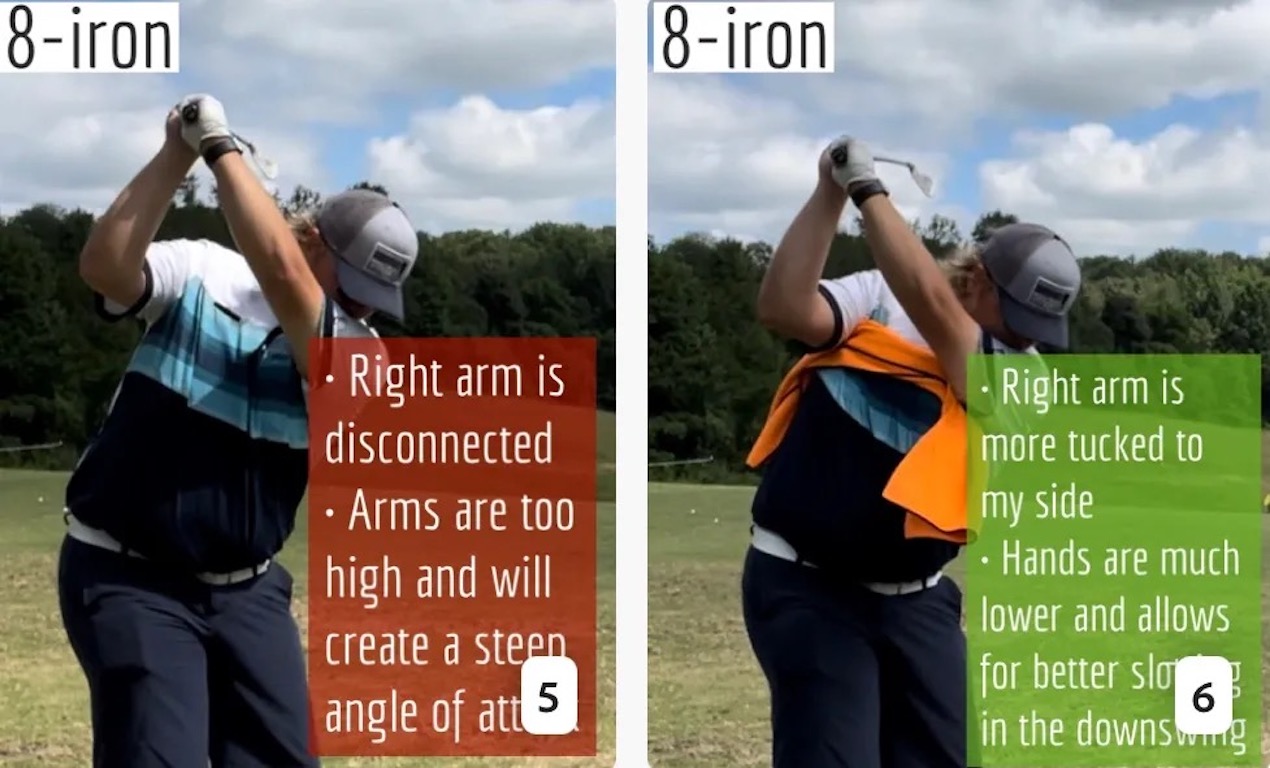
This is a classic drill that has been used for decades. However, the world of marketed training aids has grown so much during that time that this simple practice has been virtually forgotten. Because why teach people how to play golf using everyday items when you can create and sell a product that reinforces the same thing? Nevertheless, I am here to give you helpful advice without running to the nearest Edwin Watts or adding something to your Amazon cart.
For the “scoring clubs,” having a solid connection between the arms and body during the swing, especially through impact, is paramount to creating long-lasting consistency. And keeping that connection throughout the swing helps rotate the shoulders more to generate more power to help you hit it farther. So, how does this drill work, and what will your game benefit from it? Well, let’s get into it.
Setup
You can use this for basic chip shots up to complete swings. I use this with every club in my bag, up to a 9 or 8-iron. It’s natural to create incrementally more separation between the arms and body as you progress up the set. So doing this with a high iron or a wood is not recommended.
While you set up to hit a ball, simply tuck the towel underneath both armpits. The length of the towel will determine how tight it will be across your chest but don’t make it so loose that it gets in the way of your vision. After both sides are tucked, make some focused swings, keeping both arms firmly connected to the body during the backswing and follow through. (Note: It’s normal to lose connection on your lead arm during your finishing pose.) When you’re ready, put a ball in the way of those swings and get to work.
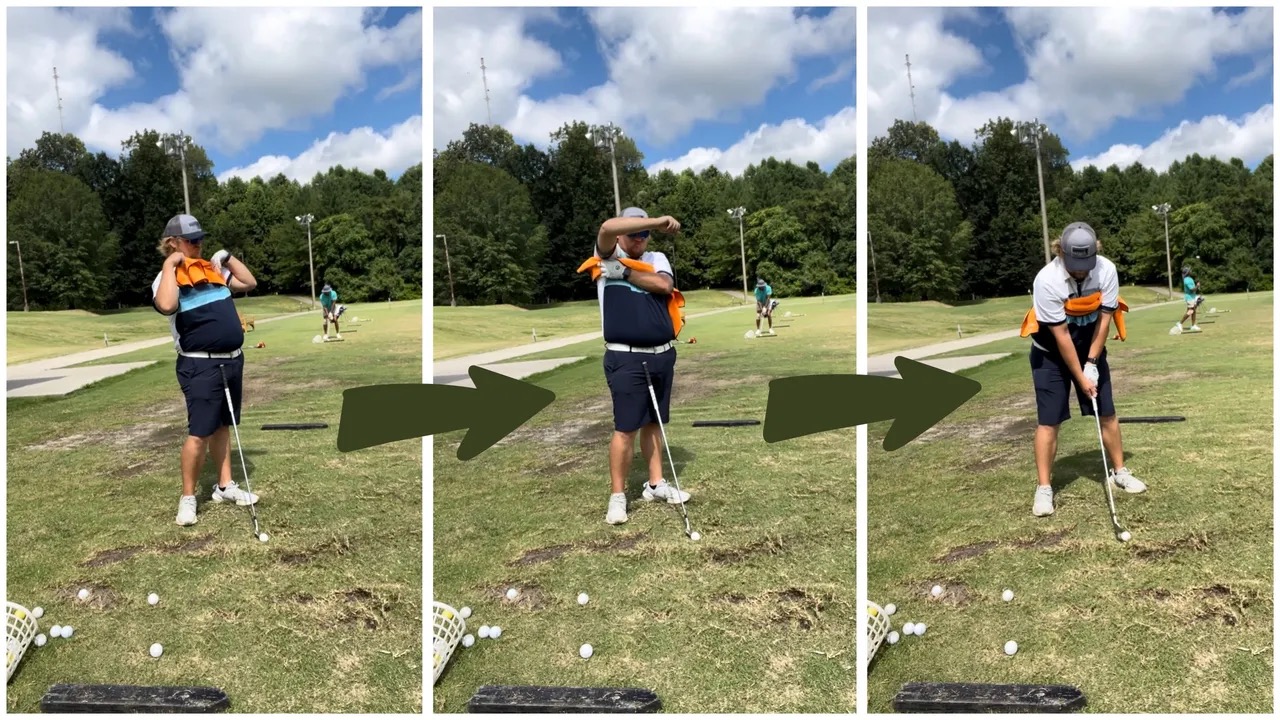
Get a Better Shoulder Turn
Many of us struggle to have proper shoulder rotation in our golf swing, especially during long layoffs. Making a swing that is all arms and no shoulders is a surefire way to have less control with wedges and less distance with full swings. Notice how I can get in a similar-looking position in both 60° wedge photos. However, one is weak and uncontrollable, while the other is strong and connected. One allows me to use my larger muscles to create my swing, and one doesn’t. The follow-through is another critical point where having a good connection, as well as solid shoulder rotation, is a must. This drill is great for those who tend to have a “chicken wing” form in their lead arm, which happens when it becomes separated from the body through impact.
In full swings, getting your shoulders to rotate in your golf swing is a great way to reinforce proper weight distribution. If your swing is all arms, it’s much harder to get your weight to naturally shift to the inside part of your trail foot in the backswing. Sure, you could make the mistake of “sliding” to get weight on your back foot, but that doesn’t fix the issue. You must turn into your trial leg to generate power. Additionally, look at the difference in separation between my hands and my head in the 8-iron examples. The green picture has more separation and has my hands lower. This will help me lessen my angle of attack and make it easier to hit the inside part of the golf ball, rather than the over-the-top move that the other picture produces.
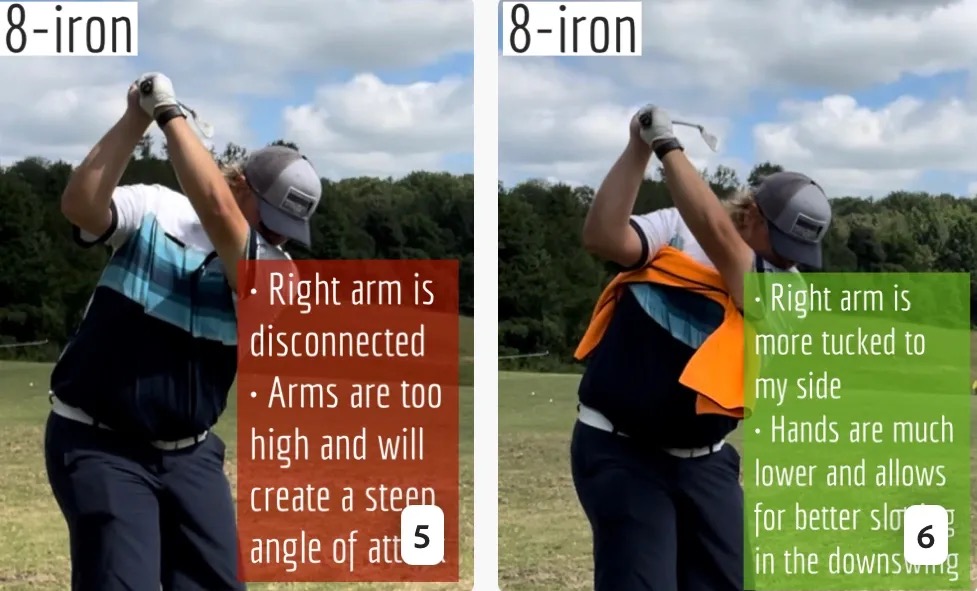
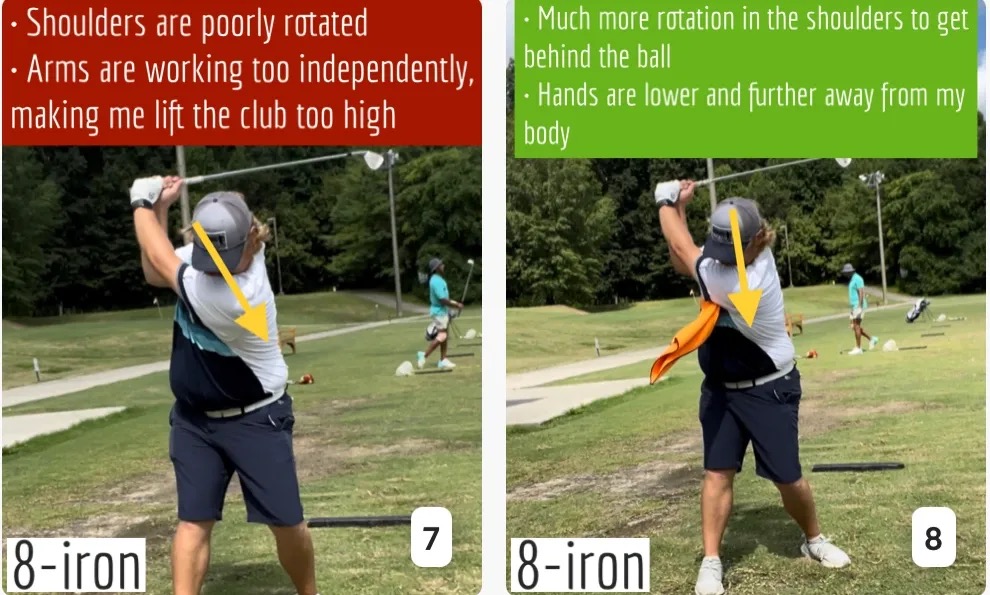
Stay Better Connected in the Backswing
When you don’t keep everything in your upper body working as one, getting to a good spot at the top of your swing is very hard to do. It would take impeccable timing along with great hand-eye coordination to hit quality shots with any sort of regularity if the arms are working separately from the body.
Notice in the red pictures of both my 60-degree wedge and 8-iron how high my hands are and the fact you can clearly see my shoulder through the gap in my arms. That has happened because the right arm, just above my elbow, has become totally disconnected from my body. That separation causes me to lift my hands as well as lose some of the extension in my left arm. This has been corrected in the green pictures by using this drill to reinforce that connection. It will also make you focus on keeping the lead arm close to your body as well. Because the moment either one loses that relationship, the towel falls.
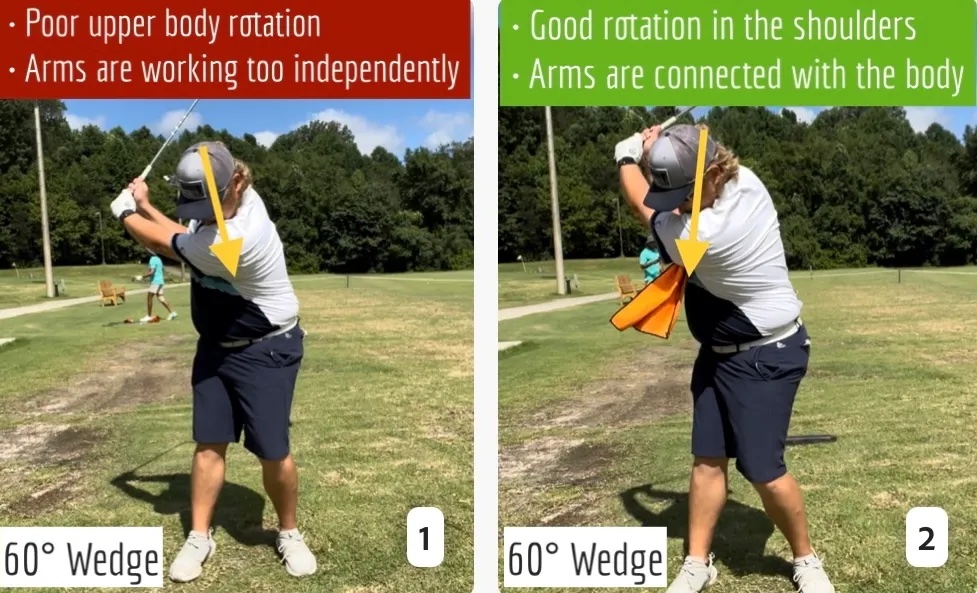
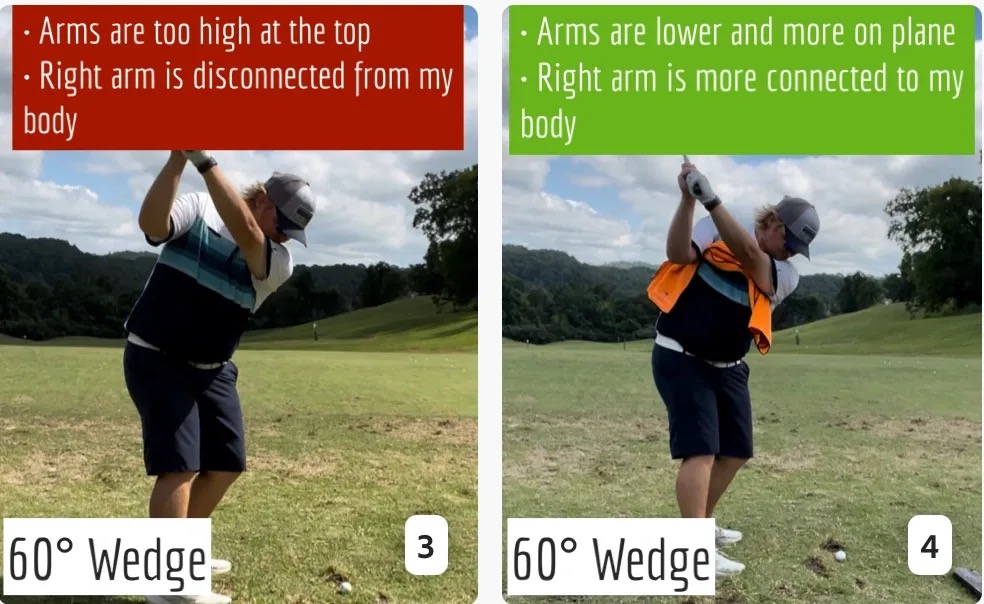
Conclusion
I have been diligent this year in finding a few drills that target some of the issues that plague my golf game; either by simply forgetting fundamental things or by coming to terms with the faults that have bitten me my whole career. I have found that having a few drills to fall back on to reinforce certain feelings helps me find my game a little easier, and the “towel drill” is most definitely one of them.
- LIKE12
- LEGIT2
- WOW2
- LOL0
- IDHT0
- FLOP2
- OB0
- SHANK8
-

 19th Hole2 weeks ago
19th Hole2 weeks agoDave Portnoy places monstrous outright bet for the 2024 Masters
-
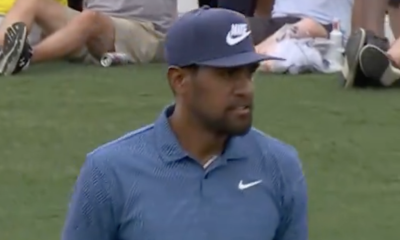
 19th Hole3 weeks ago
19th Hole3 weeks agoThings got heated at the Houston Open between Tony Finau and Alejandro Tosti. Here’s why
-

 19th Hole2 weeks ago
19th Hole2 weeks agoTiger Woods arrives at 2024 Masters equipped with a putter that may surprise you
-

 19th Hole2 weeks ago
19th Hole2 weeks agoReport: Tiger Woods has ‘eliminated sex’ in preparation for the 2024 Masters
-

 19th Hole6 days ago
19th Hole6 days agoTwo star names reportedly blanked Jon Rahm all week at the Masters
-

 19th Hole6 days ago
19th Hole6 days agoNeal Shipley presser ends in awkward fashion after reporter claims Tiger handed him note on 8th fairway
-

 19th Hole5 days ago
19th Hole5 days agoReport: LIV Golf identifies latest star name they hope to sign to breakaway tour
-

 19th Hole3 weeks ago
19th Hole3 weeks agoAddiction, spinal fusion, and scam artists – Everything Anthony Kim revealed in candid interview with David Feherty

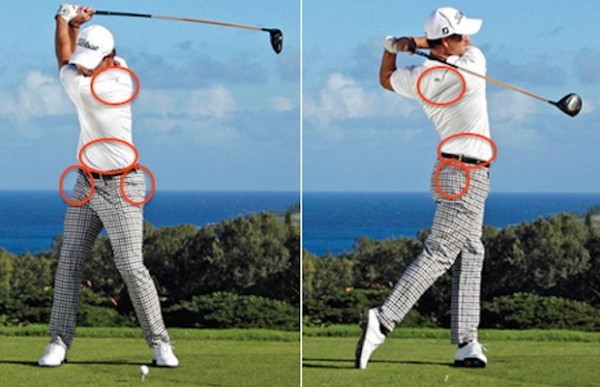
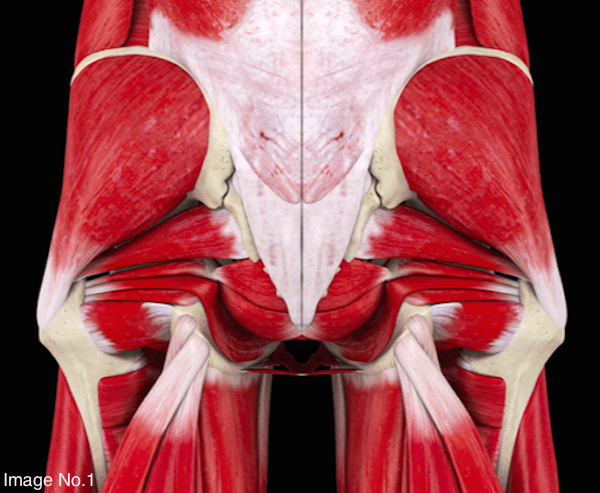
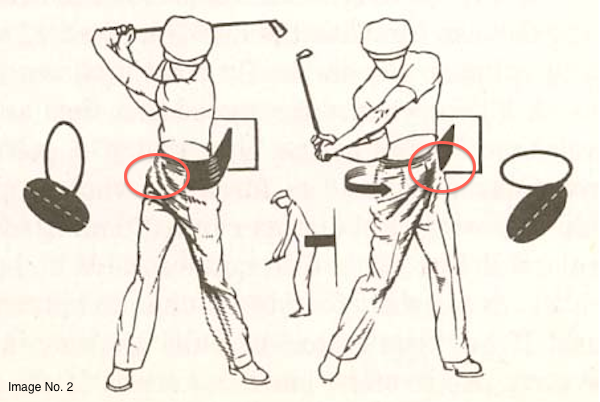
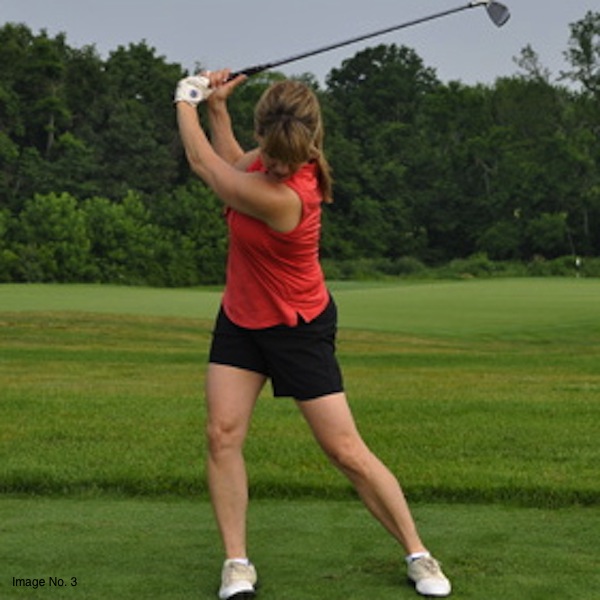
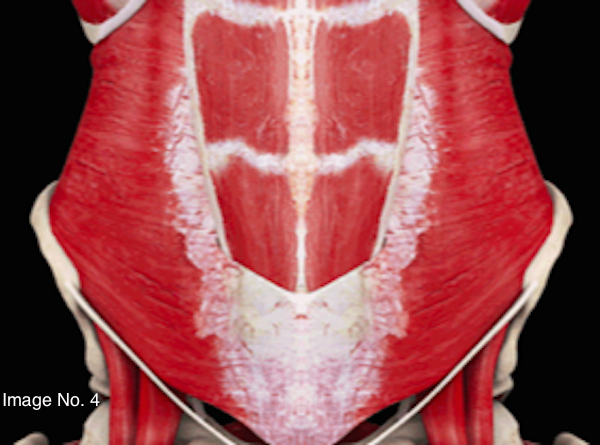
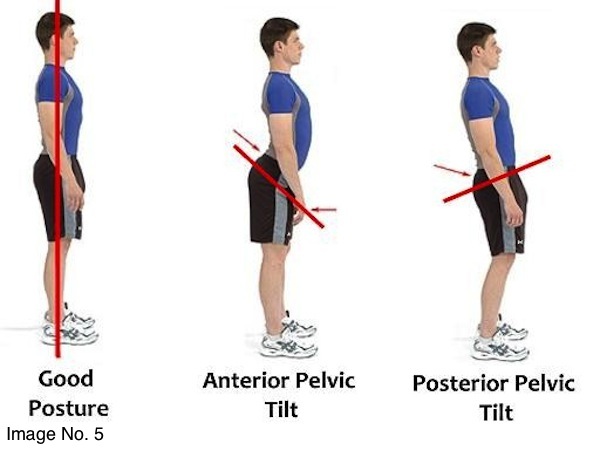
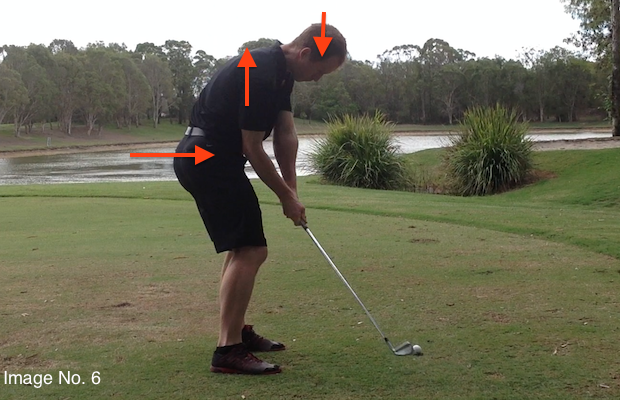

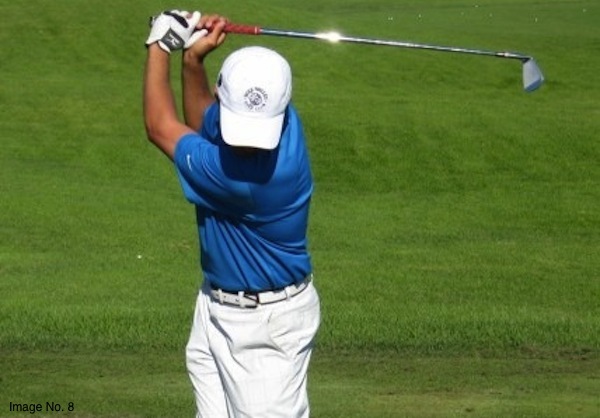
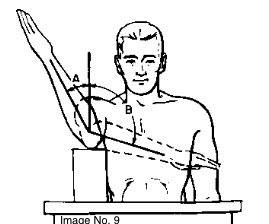


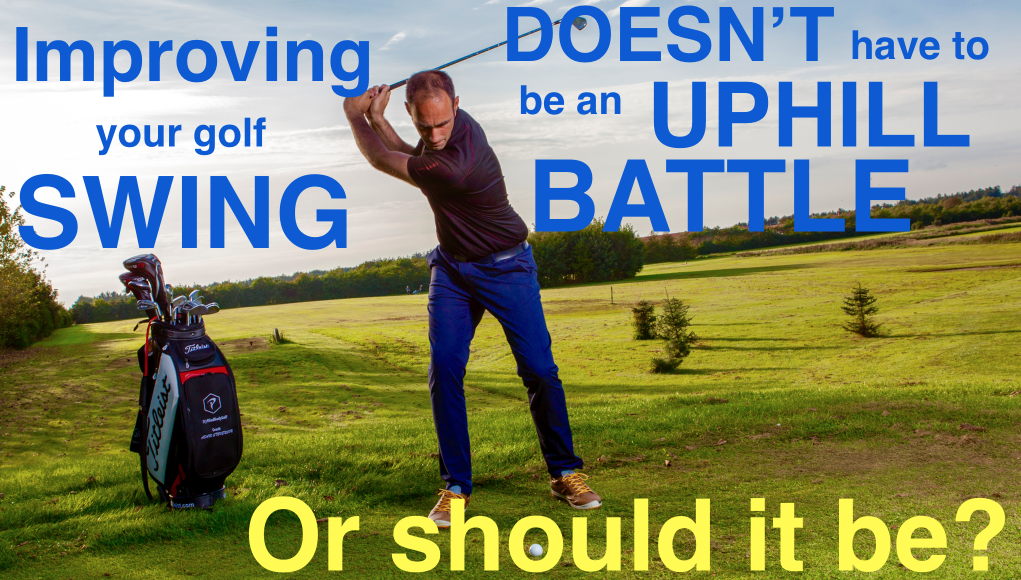
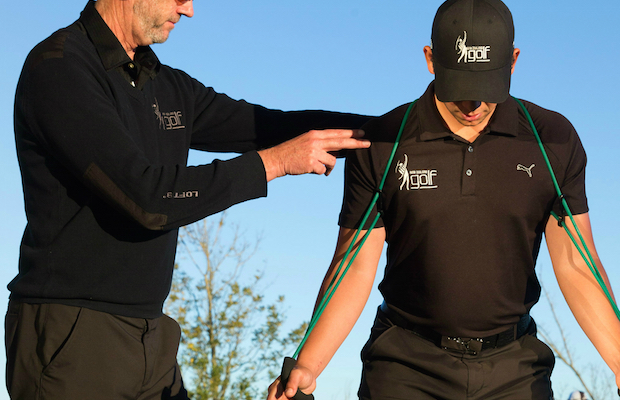
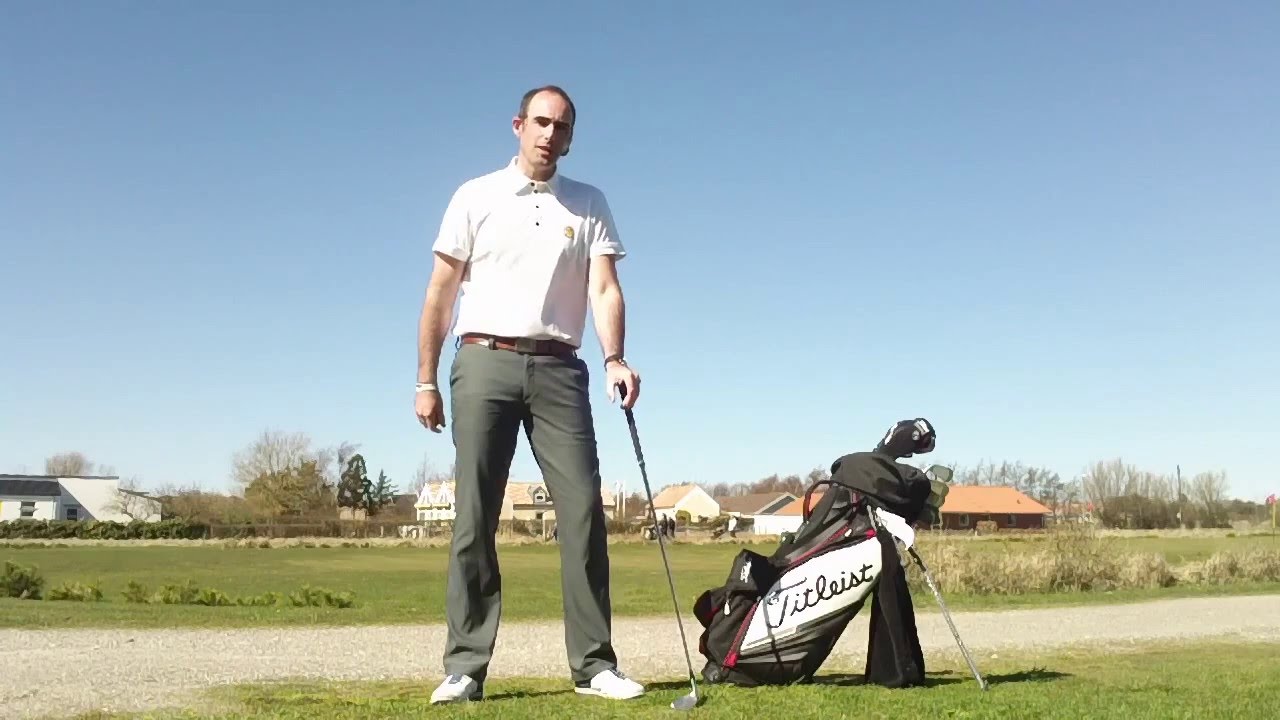
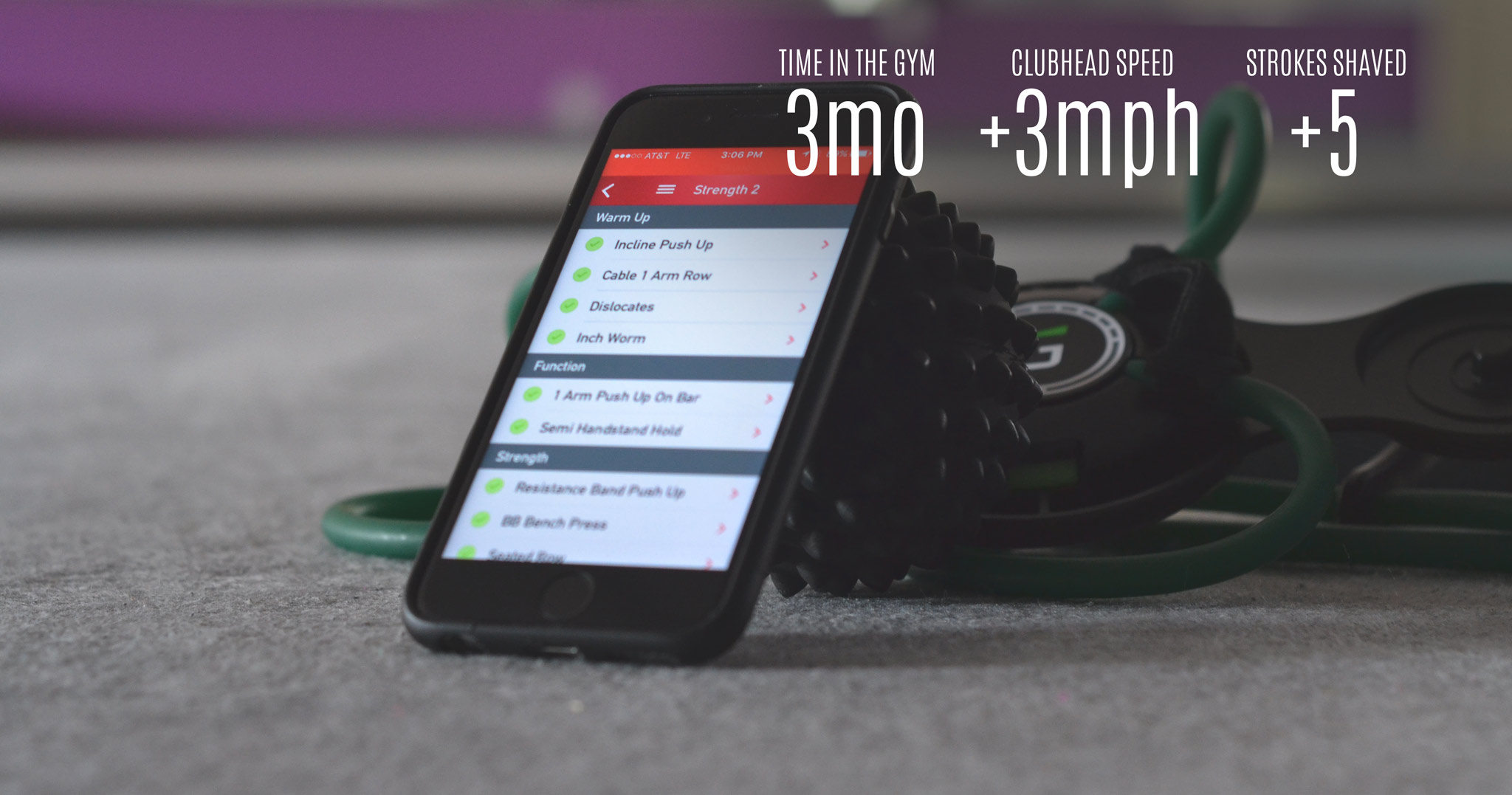
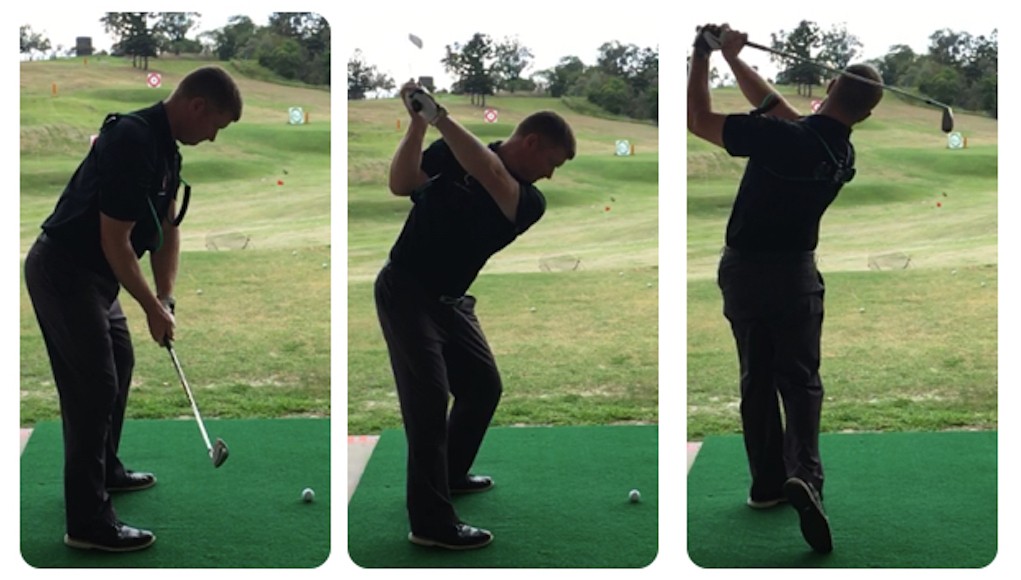
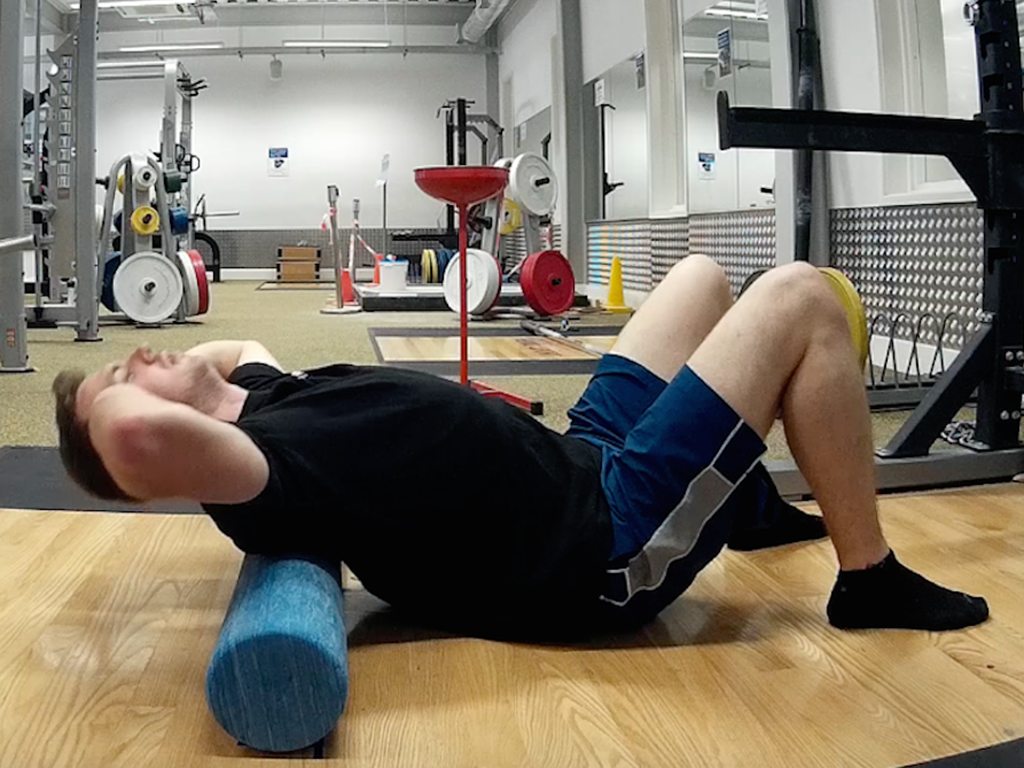



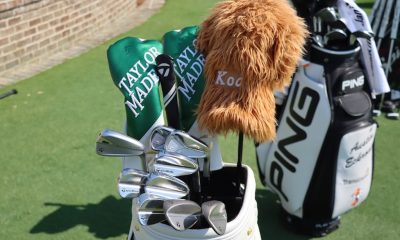

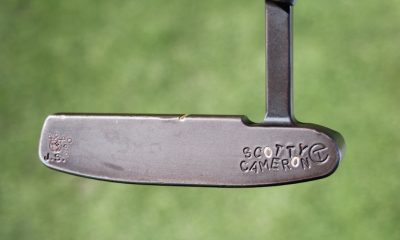

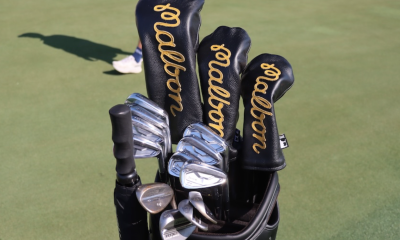

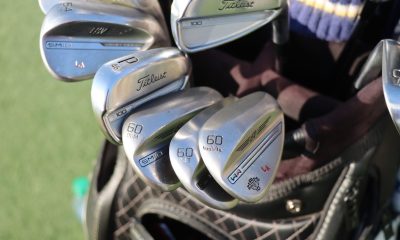

Pingback: Hip To Be Squared (Shoulders) - The Golf Shop Online Blog
Steve
Nov 5, 2014 at 3:21 pm
Could you comment on what fault you might think results in a right handed golfer having pain in the right side (mid back below scapula – rib cage area)? Is it lack of hip mobility? Swing speed around 105 mph
Nick Randall
Nov 5, 2014 at 8:02 pm
Hi Steve,
Really difficult to say without an assessment sorry. If you can get a medical or fitness professional to check your hip, thoracic and shoulder mobility that is a good start.
Dr. Frankenstick
Nov 2, 2014 at 9:11 pm
Nick, can you please send me specific recovery exercises for a rotator cuff surgery? Extensive damage means serious rehab to be ready for next spring.
Nick Randall
Nov 5, 2014 at 8:06 pm
Hi Dr. Frankenstick,
I would be happy to continue this conversation via email. I would need more information from you to do due diligence to the exercise program. Feel free to contact me at [email protected]
Jeff
Nov 1, 2014 at 6:08 pm
Hey Nick I’ve had 2 Piriformis surgerys I the last five years. Could this be why I have no hip rotation. What should I do to strengthen my hips.
Nick Randall
Nov 5, 2014 at 8:17 pm
Hi Jeff,
It’s a strong possibility but again, I’m hesitant to commit to giving specific advice without a thorough knowledge of history and assessment.
Fore some general advice on strengthening hips then check out this post from the Golf Fit Pro facebook page:
https://www.facebook.com/golffitapp/posts/532896883493675
rockflightxl1000
Oct 31, 2014 at 2:32 pm
Hey Nick, would immobility in the scapula be a huge cause for “lifting” up as your club approaches the top of your backswing?
Nick
Oct 31, 2014 at 7:38 pm
Hi rockflighttxl1000,
If it’s the body lifting up then it’s more likely lack of mobility in the hips and/or thoracic spine.
If it’s the arms lifting up then either lack scapula mobility or stability/control could well be the cause.
Difficult to say for sure without swing video AND a physical assessment
Alex
Oct 31, 2014 at 1:11 am
Can you demonstrate or somehow convey what happens if you have too much anterior pelvic tilt? I’m wondering if/when it would become an issue.
Nick
Oct 31, 2014 at 3:51 pm
Hi Alex,
Too much anterior pelvic tilt has a couple of different negative effects:
1) A lot of strain in the lower back. The lumbar spine is being put into a position where it’s not being supported by the muscles that are supposed to be holding it in place. Not good for long term spinal health.
2) It puts the pelvis into a position that makes it hard for the hips to rotate, causing compensation from the rest of the body to get the club into a decent position.
3) It also puts the spine in a position that makes it hard to rotate from the upper back, again you’ll see compensations from either legs or arms to manipulate either the torso or the club (or both).
Hope this helps!
Alex
Oct 31, 2014 at 5:04 pm
So one of the things that leads to better striking for myself is the feeling that the butt is pushed out, what seems like a lot. It does add tension in my lower back, but my thighs and pelvis seem to be more supported.
I just notice that some pros seem to have their pelvis more tucked under their upper bodies than others. But someone like Adam Scott seems to have a bit more of it..almost S posture. But, just because his shape looks that way, doesn’t mean it’s actually too far, right? Some people have more lower back curvature?
RogerinNZ
Nov 1, 2014 at 12:35 pm
Alex, Nick,
I have spent over 18 months using a Chiropractor to
straighten me up from this type of back.Had a Huge Arch.
Plus my neck was bent over, one thigh twisted.
What i have now is a lovely smooth flow in a swing!
Spine issues gone, less stress on the body.Happiness!
Ronald
Oct 30, 2014 at 11:47 pm
Stop overthinking the swing. This article is a absolutely rediculous
birly-shirly
Oct 31, 2014 at 9:25 am
Could not agree less with this comment. The subject of the article is physical capability. If you don’t have the physical capability to make a good swing, then you’re destined to introduce compensation moves. That’s where over-thinking starts.
Nick
Oct 31, 2014 at 3:52 pm
Thank you for replying in my behalf birly-shirly. I couldn’t have put it better myself!
Andrew
Nov 2, 2014 at 5:42 am
+1
Cankles
Oct 30, 2014 at 9:41 pm
Yeah…… but you know what they say about “feet of clay”?
If you don’t have good feet and ankles, none of the above matters. It’s amazing how flexible Adam’s ankles and feet are. That’s what facilitates this whole thing. If he was stiff in his ankles, he would not be able to swing like he does.
Nick
Oct 31, 2014 at 3:41 pm
Hi Cankles,
I agree, ankle mobility is important. It just didn’t quite make it into my top 3.
Thank you for the input though.
Pingback: The 3 Most Important Areas Of Your Body For Golf | Golf Gear Select
TR1PTIK
Oct 30, 2014 at 4:16 pm
Well written with good information that can help the average golfer understand more about a) their body, and b) their swing. Any specific tips for working on those areas somewhere down the pipe?
Ronald
Oct 30, 2014 at 11:51 pm
The average golfer doesn’t need to know about the scapula. This is the biggest joke
HitEmTrue
Oct 31, 2014 at 10:29 am
Most average golfers make no real effort to improve. Not real sure that is his target audience…
Nick
Oct 31, 2014 at 3:43 pm
Spot on HitEmTrue, this article isn’t aimed at your average golfer – it’s far too technical! The information that would get delivered to the player is put much more simply, without the use of technical jargon.
Nick
Oct 31, 2014 at 3:45 pm
Hi TR1TIK,
Yes absolutely, I’ll write some articles on how to target each area with some simple exercises. Is there an area you are looking at in particular for yourself?